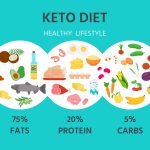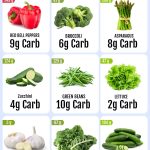The concept of a balanced diet is far from new, yet it remains a vital cornerstone of good health and overall well-being. To help individuals make healthier food choices and ensure that they get the essential nutrients, the food pyramid has long been an invaluable tool. In this blog post, we will explore how to construct a nutritious plate using the food pyramid as your guide. We’ll delve into the various food groups, serving recommendations, and the importance of balance. Additionally, we’ll provide external links and address frequently asked questions (FAQs) to assist you in making informed decisions about your dietary choices.
Deciphering the Food Pyramid
The food pyramid is a visual representation of a balanced diet, outlining the different food groups and their recommended daily servings. It serves as a fundamental guide to help individuals meet their nutritional needs and maintain good health.
The Basic Structure of the Food Pyramid
The food pyramid consists of the following layers, from bottom to top:
- Grains: The foundation of the pyramid, grains provide essential carbohydrates, which are a primary energy source. Examples include bread, rice, pasta, and cereals.
- Vegetables: Above grains are vegetables, which offer a wide array of vitamins, minerals, and dietary fiber. Aim for a colorful mix of vegetables for diverse nutrients.
- Fruits: Positioned beside vegetables, fruits are rich in vitamins, antioxidants, and dietary fiber. They add natural sweetness to your diet.
- Protein: The next level features protein sources like meat, poultry, fish, beans, and nuts. These are crucial for muscle growth, tissue repair, and overall body function.
- Dairy: Dairy products, including milk, yogurt, and cheese, are rich in calcium and essential for bone health. They are positioned above the protein group.
- Fats, Oils, and Sweets: At the top of the pyramid are fats, oils, and sweets. These should be consumed sparingly, as they are high in calories and can contribute to weight gain.
The Nutty Delight: Exploring the Health Benefits of Chestnuts
Constructing Your Nutritious Plate
1. Grains (6-8 Servings)
Grains should form the foundation of your diet, constituting the largest portion of your plate. Opt for whole grains like brown rice, whole-grain bread, or quinoa. These choices provide essential fiber and nutrients.
2. Vegetables (3-5 Servings)
Your plate should be filled with colorful, non-starchy vegetables. Broccoli, carrots, spinach, and bell peppers are excellent choices. They are packed with vitamins, minerals, and fiber.
3. Fruits (2-4 Servings)
Add a variety of fresh fruits to your plate. Berries, apples, oranges, and bananas are great options. Fruits provide natural sweetness and essential nutrients.
4. Protein (2-3 Servings)
Protein sources are vital for muscle and tissue health. Include lean meats, poultry, fish, beans, lentils, and nuts in your diet. Vary your protein sources for a broad spectrum of nutrients.
5. Dairy (2-3 Servings)
Dairy products like milk, yogurt, and cheese are essential for calcium intake. Choose low-fat or fat-free options for a healthier choice.
6. Fats, Oils, and Sweets (Use Sparingly)
Fats, oils, and sweets should be consumed in moderation. These are high in calories and should not dominate your plate.
Embrace the Goodness: Capsicum, Your Manganese-Rich Companion
External Resources for Further Learning
- ChooseMyPlate – The Food Pyramid
- Harvard School of Public Health – Healthy Eating Plate vs. USDA’s MyPlate
- Mayo Clinic – Nutrition Basics
Frequently Asked Questions (FAQs)
Q1. How can I adapt the food pyramid to dietary restrictions or preferences?
The food pyramid is a flexible guide. You can adapt it to accommodate dietary restrictions or preferences, such as vegetarian or vegan diets.
Q2. Are there alternatives to the traditional food pyramid, like the Healthy Eating Plate?
Yes, alternatives like the Healthy Eating Plate offer a slightly different perspective on a balanced diet. They emphasize whole grains and lean proteins.
Q3. How do portion sizes relate to the food pyramid recommendations?
Portion sizes can vary depending on age, sex, and activity level. The food pyramid provides general serving recommendations, but individual needs may differ.
Q4. Can I follow the food pyramid for weight loss?
The food pyramid can be adapted for weight loss by adjusting portion sizes and focusing on nutrient-dense foods. Consulting a registered dietitian can be helpful.
In Conclusion: A Balanced Plate for a Balanced Life
In conclusion, the food pyramid is a valuable tool for crafting a balanced and nutritious plate. By incorporating a variety of foods from different groups, you can ensure you receive a wide array of essential nutrients. It’s important to balance portion sizes and make choices that align with your individual dietary needs and goals. Remember, a balanced plate contributes to a balanced and healthier life.










